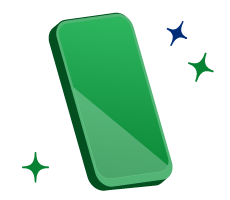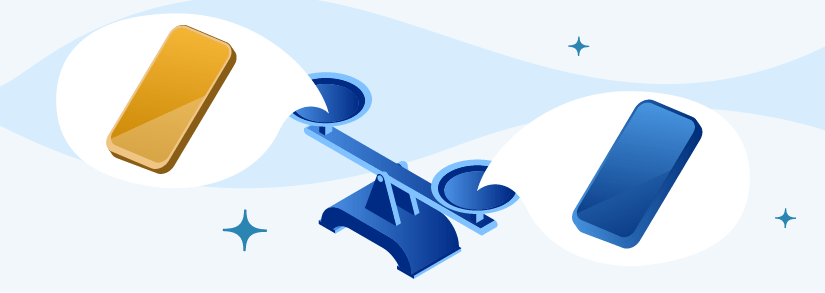iPhone vs Android 2025: Australia’s Ultimate Comparison Guide
Choosing between iPhone and Android has always been a hot topic. Both platforms have evolved significantly, and in 2025, they offer cutting-edge features in terms of performance, camera quality, display, and user experience. Whether you're looking for simplicity, customization, or top-tier hardware, each option has something unique to offer. Let’s break down the differences to help you decide which one is the best fit for you.
Sign up for Apple TV+ and enjoy exclusive content!
Key Models in Australia for 2025
In Australia, both Apple and Android brands have released their latest flagship models, each with a range of features at various price points.
- Apple iPhone 16 Series: The lineup includes the iPhone 16, iPhone 16 Plus, iPhone 16 Pro, and iPhone 16 Pro Max. These models are priced from AUD $1,399 to AUD $2,149, offering different screen sizes, storage options, and camera capabilities.
- Samsung Galaxy S25 Ultra: Known for its exceptional camera and display technology, this flagship Android device is priced around AUD $2,349. A wide range of Galaxy S25 accesories is also available for users looking to enhance charging or usability.
- Google Pixel 9 Pro: This model, priced around AUD $1,699, is famous for its AI-powered camera and stock Android experience.
For those on a budget, Android provides more affordable models starting from AUD $300, while Apple mainly focuses on premium devices. However, older models like the iPhone SE (3rd Gen) are available for around AUD $750, offering an entry point into Apple’s ecosystem.
Find the Best Deals on Broadband Mobile Plans Today!
Call Selectra to Compare Deals & Sign Up
Camera Quality: iPhone vs. Android
When it comes to cameras, both iPhone and Android have stepped up their game, offering advanced photography features that cater to different needs.
- iPhone 16 Pro Max: Equipped with a 48MP primary sensor and a 5x telephoto lens, this phone excels at natural-looking photos with excellent color balance. The low-light performance is exceptional, and the image processing technology creates smooth skin tones and sharp details.
- Samsung Galaxy S25 Ultra: With its 200MP primary sensor and 10x optical zoom, this phone captures intricate details and performs well in both daylight and low-light conditions. It also excels at long-range photography with its powerful zoom capabilities.
- Google Pixel 9 Pro: The Pixel’s computational photography technology makes it one of the best options for night shots, portrait mode, and automatic adjustments. The 50MP main sensor delivers crisp, AI-enhanced images.
If you prioritize photography, Android models tend to offer more manual controls and zoom capabilities. However, iPhones are known for producing consistent, natural-looking images in any setting, making them ideal for everyday use.

iPhone vs Android: Which Phone Is More User-Friendly?
User experience is one of the biggest differences between iPhone vs Android. Each platform caters to different types of users, from those seeking simplicity to those who enjoy customization.
- iPhone (iOS 18): Apple’s operating system is designed for ease of use, with an intuitive interface that’s consistent across all devices. Features like Face ID, Airdrop, and Continuity create a seamless experience for users who own other Apple devices, such as MacBooks or iPads. Apple also has a reputation for quick and reliable software updates, ensuring security and new features.
- Android: Android is all about flexibility. You can customize widgets, themes, and layouts to suit your preferences. Brands like Samsung and Google offer different takes on the Android experience, with Samsung’s One UI focusing on user-friendliness and Google’s stock Android offering a clean, bloat-free experience. However, the Android experience can vary depending on the brand and model, which may feel inconsistent to some users.
Ultimately, if you value simplicity and seamless integration, the iPhone is a great choice. Android, on the other hand, is ideal for those who want complete control over how their phone looks and functions.

Display and Resolution: Android vs iPhone
The display quality is a crucial factor for many users, especially those who enjoy streaming, gaming, or photo editing on their phones.
- iPhone 16 Pro Max: The Super Retina XDR OLED display measures 6.7 inches and features Pro-Motion technology, which offers a 120Hz refresh rate for smooth scrolling. The display is bright, vibrant, and well-suited for all lighting conditions.
- Samsung Galaxy S25 Ultra: This phone boasts a 6.8-inch Dynamic AMOLED display with a 1440p resolution and a 120Hz refresh rate. The higher resolution and HDR support make it ideal for media consumption and gaming.
- Google Pixel 9 Pro: With its 6.7-inch OLED display, the Pixel offers sharp contrast, true blacks, and vibrant colors that enhance the viewing experience.
While iPhones are known for their color accuracy and brightness, many Android flagships offer larger screen sizes and higher resolutions, making them perfect for those who want a more immersive visual experience.
Are you looking for a refurbished phone?
Click Below for the best deals in Australia!
Performance and Battery Life: Android vs iPhone
Performance and battery life are critical for users who rely on their phones for work, gaming, or heavy multitasking.
- iPhone 16 Pro and Pro Max: Powered by Apple’s new A17 Pro chip, the latest iPhones deliver lightning-fast performance and excellent energy efficiency. Battery life can last up to 20 hours of video playback, ensuring all-day use without frequent recharging.
- Android (Snapdragon 8 Gen 3): Most high-end Android models, including the Samsung Galaxy S25 Ultra, use the latest Snapdragon processor. These chips provide comparable speed to Apple’s A18 Pro, though battery life can vary by brand and model. Many Android devices also offer fast-charging options that can charge up to 50% in under 30 minutes.
While both platforms excel in performance, Apple’s devices tend to maintain their speed and efficiency for longer, making them a solid choice for longevity. Android, however, often leads the way with faster charging and larger battery capacities.

Apple Music offers millions of songs, curated playlists, and personalised recommendations to suit your tastes. Stream your favourite artists, download songs for offline listening, and enjoy seamless integration with all your Apple devices. Plus, with Apple TV+, you can access exclusive TV shows and movies, all in one place.
Charging & Port Compatibility: iPhone vs Android
In 2025, both iPhones and Android devices now widely use USB-C charging ports. Apple’s shift to USB-C starting with the iPhone 15 series means users can enjoy faster charging and universal compatibility with accessories like power banks, laptops, and external drives. Android devices, which have long adopted USB-C, continue to lead with faster charging technologies. This move simplifies charging for users, especially those who own devices across ecosystems.

Pricing and Value in Australia: Android vs iPhone
Price is a major factor when choosing between iPhone vs Android. Here is a breakdown of the costs for the newest models:
| Phone Type | Storage (lowest amount offered) | Price |
|---|---|---|
| iPhone 16 | 128 GB | $1,399 |
| iPhone 16 Plus | 128 GB | $1,599 |
| iPhone 16 Pro | 128 GB | $1,799 |
| iPhone 16 Pro Max | 256 GB | $2,149 |
| Galaxy S24 | 256 GB | $2,149 |
| Galaxy S25 Ultra | 256 GB | $749 |
| Google Pixel 9 | 128 GB | $1,699 |
| Google Pixel 9 Pro XL | 256 GB | $1,349 |
If you’re on a budget, Android has a wider selection of mid-range options. However, Apple’s devices often have a higher resale value, which may help offset the initial cost. If these don’t suit your budget, check out our budget friendly guide for the cheapest phones in Australia. Also note that your phone provider may have a deal to make a new phone cheaper, check out our mobile internet guide to find the cheapest provider for your needs.
Are you looking for a refurbished phone?
Click Below for the best deals in Australia!
Which Should You Choose: Android vs iPhone?
In 2025, both iPhone and Android phones offer incredible features, making the decision largely dependent on personal preference. If you want simplicity, seamless integration, and long-term updates, the iPhone is likely the better option. However, if customization, variety, and more budget-friendly options are important to you, Android may be the way to go. Whichever you choose, both platforms have evolved to meet the diverse needs of modern users, ensuring you’ll get a high-quality experience no matter what.
Frequently Asked Questions
Which is more popular in Australia: iPhone vs Android?
As of mid 2025, iOS (iPhone) holds just over 56% of the Australian mobile market, with Android around 43%—reversing the global trend where Android dominates, making Australia an iPhone stronghold compared to most countries.
Which lasts longer: iPhone vs Android?
iPhones generally receive major software updates for longer—up to five years—ensuring security and performance. Premium Androids like Samsung and Google offer 3-5 years, but low-cost models may get updates for only 1-2 years.
Why do some choose Android vs iPhone?
Android offers more customisation, a huge variety of phone choices across prices, and advanced hardware options like foldable screens and big batteries. Verdict: Android is best for those who want freedom and features on any budget.
Are iPhones safer than Androids?
Apple’s closed ecosystem and strict app review process make iPhones less likely to face malware. Android has improved security with every version, but risks can be higher if users download apps outside Google Play or skip updates.
Which has better resale value?
iPhones typically maintain high second-hand value, whereas Android prices drop faster after launch—although some flagship models like Samsung’s Ultra series also hold value well for the first two years.

Apple Music offers millions of songs, curated playlists, and personalised recommendations to suit your tastes. Stream your favourite artists, download songs for offline listening, and enjoy seamless integration with all your Apple devices. Plus, with Apple TV+, you can access exclusive TV shows and movies, all in one place.
Need Help Finding a New Internet or Mobile Plan?
Our experts are available to help you free of charge:

Need Help Finding for a New Internet or Mobile Plan?
Our experts are available to help you free of charge:

